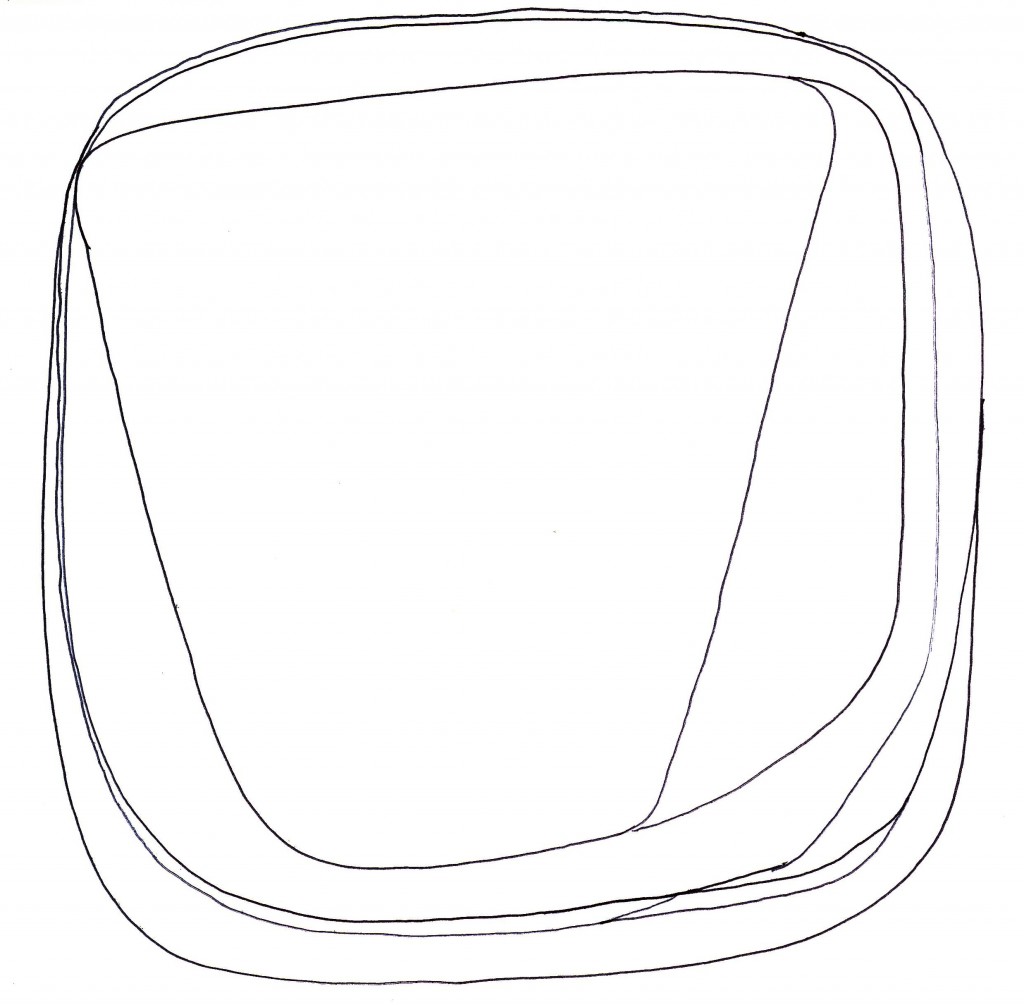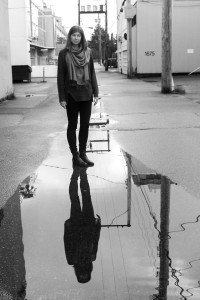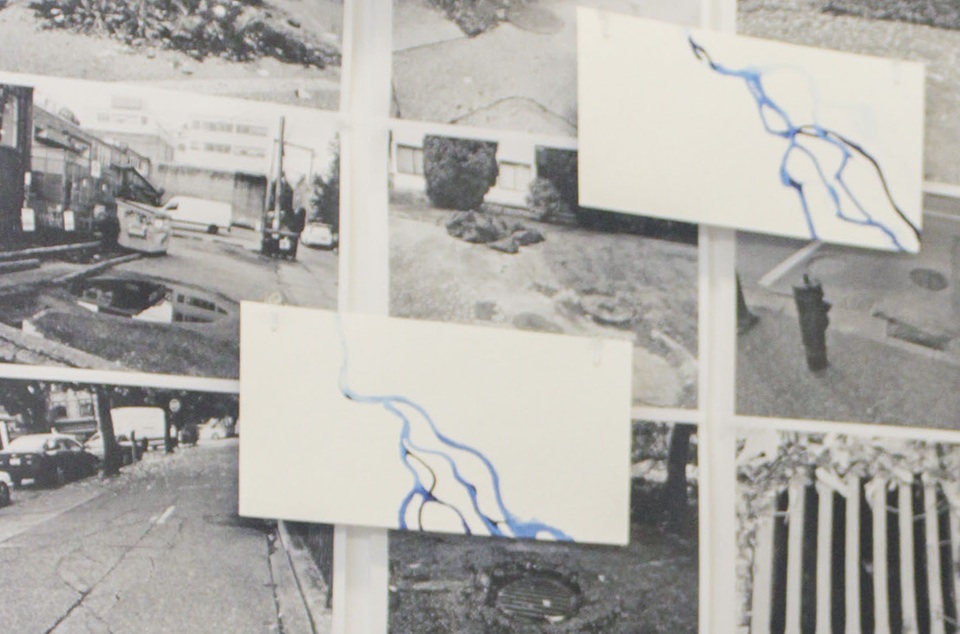Along the wall of Lacey McRae Williams’ studio hangs a map, a particularly local cross section of False Creek and the surrounding area. Superimposed on its geography is a winding path of copper wire, beginning at the shore, and quickly cutting over roadways, through buildings, and along other stretches of urbanity before finally closing the loop it began back at the water’s edge. While the route at first appears to be an unsuccessful attempt at cartography, its significance comes not from what is on the map, but rather what could have been — the lost shoreline of False Creek, a history imperceptible to most, but vividly apparent to Williams.
Currently enrolled in the Master of Applied Arts program at the Emily Carr University of Art and Design, Williams is fascinated with the idea of “a history that’s invisible in an urban space.”
“I come from an urban planning background, and there’s a lot of concealment in cities,” she says, “I like the idea of understanding what was here previously and how we can use art to get people to think about the places they’re standing on.”

For Williams, that idea has become something of a colossus. Originating in Toronto with her involvement in lost river walks, a project committed to tracing the city’s relationship with its forgotten streams and rivers, the artist and urban planner has taken the lessons learned out east and transposed them transnationally with her current work rediscovering the background of Vancouver’s vanished waterways. As a result of her youth and artistic eye, Williams realised that the ideals surrounding lost river walks could be worked into something with greater sense of aesthetic and accessibility.
“I noticed that with certain causes, you tend to speak to an audience that is already converted to the message — they’re already interested in what you’re trying to share,” Williams observes of her time in Toronto.
Her desire for outreach extends beyond just the general public, however, with designs on effecting the wills and whims of the city’s elite.
“I figured maybe there’s a way to interrupt the system by using art to not only engage public audiences, but also to tug on the heartstrings and the interests of politicians and decision makers, and to get them to understand that there are more opportunities for different types of projects in the city that they may not think about,” she explains. “There’s almost an ignorance to creative possibilities that isn’t their fault. They just think, ‘This is my job, this is what I do, and I know it works at some level.’”

The intersection of art and urban planning which Williams describes seems to permeate throughout her thoughts and plans on all occasions. In many ways, her work has become less of a juxtaposition between these two separate focuses, and more of a synthesis between them. Despite the two sides of her life operating in different languages, and belonging to different groups of people, Williams is still wont to find parallels.
“I think that my role as an artist is to understand where the art exists even in bureaucratic processes,” she posits.
As such, Williams’ most strident task comes not from reconciling her position as an urban planner and her work as an emerging artist, but rather figuring out how to harmonize her experiences exploring the city into what she wants to create between four walls and a roof.
“Sure, this is my studio, but also that,” she says, pointing to the aforementioned map on her wall, “is my studio. Walking on the invisible shoreline of False Creek — that’s a studio space.”

Williams’ struggle encompasses not only composing a piece of art from her intangible process, but creating something she feels is meaningful by virtue of it being exploratory. To simply create some sort of proxy of her walks, she argues, does not capture the experience embedded within physically travelling through space.
“I’m just learning how to bring what I do outside inside. That’s a huge challenge, that might be the hardest part of this practice,” Williams laments.
“I like to think of buildings as pages in a history book. So you’re walking down the street — which stories are being told to you? And which ones aren’t? I hope to help insert some pages.”
Williams’ work consistently emulates a sense of duality — the urban planner and the artist, to be sure, but also the storyteller and the historian, the institutional critic and the student within an institution. Forthrightly, she dismisses the obvious label of “environmental artist” ascribed to her as a result of her work and ideology, seeing such labels as a diminutive interpretation of what she hopes to accomplish. “I don’t want to define myself by those terms. I hope there’s a complexity to the work that crosses boundaries … There’s this idea that you carry a story and once you learn it, it’s your responsibility to carry it forward in a good way, and maybe the work I’m doing doesn’t show that explicitly, but I’m exploring through how to negotiate that pretty uncomfortable space.”
It’s that sense of exploration, that desire to collect experiences and share stories, that commitment to getting out in the real world and discovering what is and isn’t there, which truly drives Williams’ artistic fervour. Through her walks and her works, one can hope that the shoreline which False Creek lost might just be able to be found again.
x
Want to see Lacey’s work up close and personal? Check out the ECUAD Interim Grad Show at the Concourse from March 11-18, or join her on “The Traces Between Us” walk along the former shoreline of False Creek happening on March 16 at 2pm. Visit laceymcraewilliams.com for more information, or @lostriverartist on Instagram.


